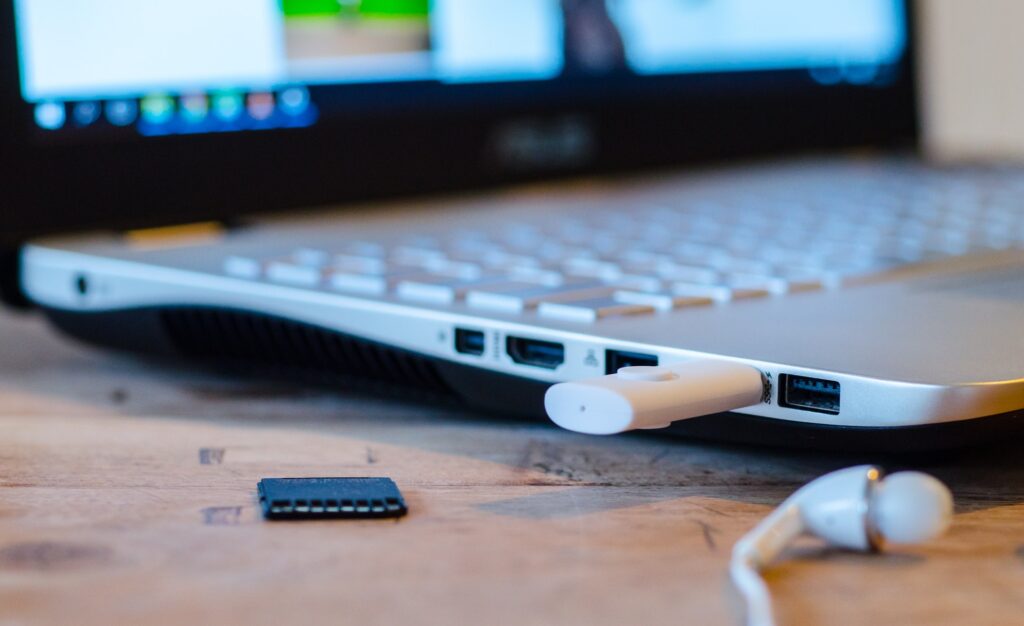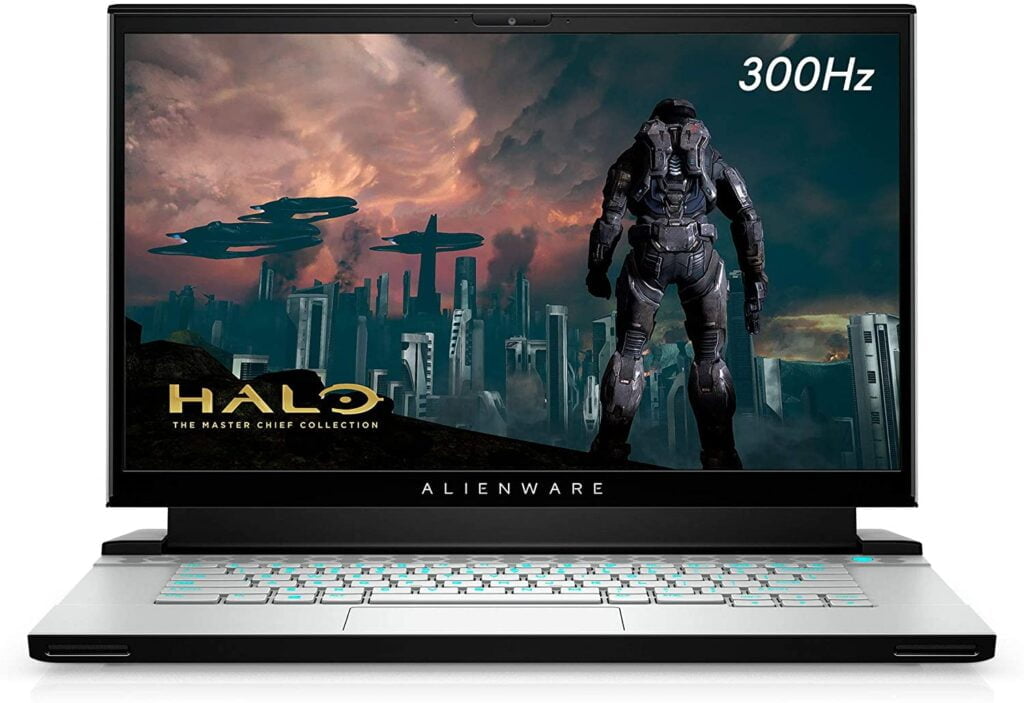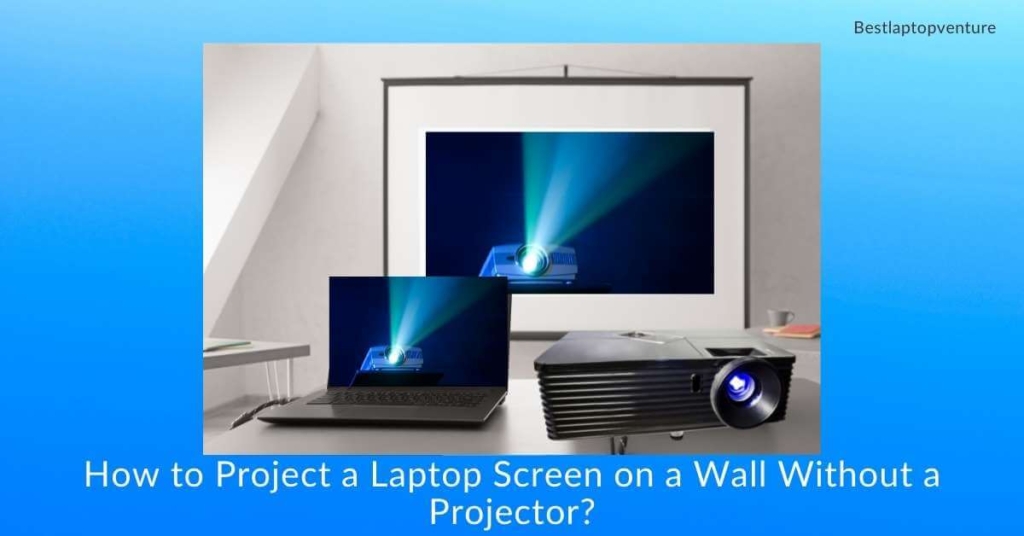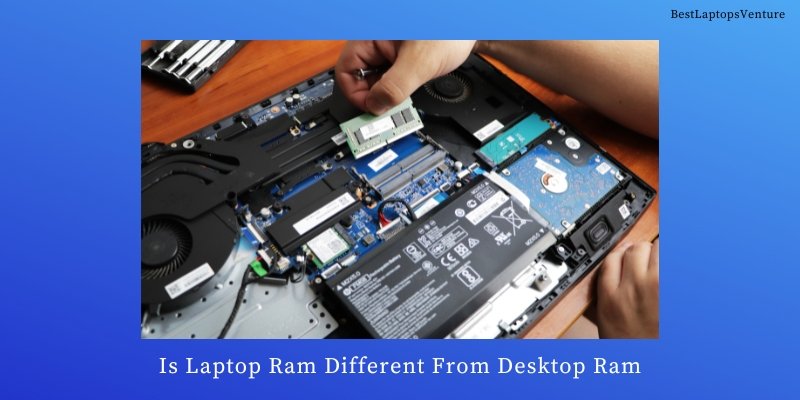
Purchasing a laptop is significant, and there are several considerations. This article will cover the fundamentals and assist you in determining the best gaming laptop for 2024.
When purchasing a new gaming laptop, it isn’t easy to know where to begin. First, consider a variety of aspects, including the display, form size, battery life, and, of course, the components that power it all.
Due to the fact that upgrading a gaming laptop’s hardware is not always feasible, it’s critical to plan ahead and consider how you want to utilize your machine.
Prioritizing the things that matter most to you is an excellent starting point.
We’ll go into further detail about each of these topics later, but let’s begin with some fundamentals.
Key Features to Consider When Choosing the Best Gaming Laptop
Display: Your gaming experience might be impacted by the size, resolution, and refresh rate of your display.
Do you want to prioritize a screen with a high resolution or refresh rate, or do you want to utilize an external monitor?
The central processing unit and graphics processing unit: Compare component specs like core count and clock speed and benchmarks to quickly compare product lines.
SSD: Speicher und Speicherung Recognize the difference between SSDs and hard disk drives and calculate the amount of RAM required for how your system will be used.
Design: While lighter laptops may be more portable while playing demanding games at home, more powerful hardware may be a higher requirement.
Ports and inlet/outlet configurations: Consider how many peripherals, such as external storage and audio, you anticipate utilizing. Do you require additional adaptability, space, or high-speed ports?
Let’s take a deeper look at the features you’ll find while shopping for a gaming laptop, beginning with the first thing you’ll notice when you open it: the screen.
Display
While the correct display may significantly enhance your gaming experience, there are more aspects to consider beyond the screen’s size.
Features of a Laptop Display
Resolution: A higher resolution means that more pixels are displayed on the screen, which might result in a more detailed image.
While newer laptops may include 1440p or 4K displays instead of the 1080p norm, the additional technology necessary to run games at these resolutions is likely to increase the price.
Periodicity of a refresh: A faster refresh rate display may make the on-screen action look more fluid and easy to follow. This is accomplished by increasing the number of times the image is redrawn each second.
Numerous gaming laptop screens include this technology, with some supporting refresh rates of 120Hz, 144Hz, or even higher.
The dimensions of the display: The form format and display size of laptops vary, with the most popular variants including 13, 15, and 17-inch displays. Bezels (the boundaries around the screen) that are thinner enable bigger displays to be housed in smaller form factors.
CFL (Organic Light-Emitting Diode): These displays, available on a limited number of gaming laptops, use pixels that generate their own light rather than a backlight.
This enables them to reach deeper black depths and more contrast than the majority of laptop displays, which are frequently illuminated by LEDs.
Connecting a laptop to an external display is a simple method to improve your portable PC experience.
This enables the use of a laptop with a compact form factor on the road, followed by a screen with 4K resolution, 240Hz refresh rate, or an ultrawide aspect ratio while returning home.
When contemplating an external monitor with a high resolution or refresh rate, check that the CPU and graphics card you choose is capable of supporting those characteristics.
Comparing the components of the laptop you’re contemplating to the suggested specs for the games you’re expecting to play can help you prioritize your component selection.
CPU

The central processing unit, or CPU, of your laptop, serves as its “brain.” It communicates with the rest of your system’s components and processes the instructions given by all of the applications operating on your computer.
Your CPU selection has a huge influence on every aspect of your life, from the frame rates you see in games to the reaction times of programs and even your laptop’s battery life.
While core count and clock speed are the most often quoted CPU characteristics, a variety of additional factors are considered, including the CPU’s overclocking capability3.
Because the CPU functions that are most important to you will vary according to how you use your laptop, it’s useful to understand the fundamentals.
Features of the CPU
Temporary. The clock speed of a CPU is measured in cycles per second (measured in GHz). While a quicker CPU is often associated with a greater clock speed, several other factors come into play.
Our guide has further information about CPU clock speed.
Count the number of cores Multiple cores enable a CPU to multitask since each core acts as a separate processing unit capable of working in parallel to accomplish more.
In addition, Intel® Hyper-Threading Technology-enabled CPUs may execute several software threads per hardware core, potentially resulting in even greater performance benefits.
Alternatives to the CPU There are CPUs developed particularly for virtually any application, so it’s worth taking the time to choose the one that best fits your intended usage of the system.
If you need more cores and faster speeds, the Intel® CoreTM H CPU series may be a good option. CPUs that are not overclocked (such as the Intel® CoreTM i9-10980HK CPU) can be overclocked for increased performance.
If mobility is a primary need, energy-efficient CPUs such as Intel’s U-series can assist in extending battery life. Here’s additional information about the various CPU configurations.
We suggest at least an Intel® CoreTM i7 CPU to ensure consistent in-game performance when broadcasting or recording games.
Increased clock rates and core counts are critical if you intend to broadcast gaming live, as capturing software frequently requires substantial computing power to encode footage.
If you want to learn more about CPU specifications and configurations, check out our post on how to pick a gaming CPU.
GPU

When you’re gaming, the GPU, or Graphics Processing Unit, of your laptop generates the pixels that make up the pictures on the screen.
Together with your CPU, it’s necessary for smooth frame rates and high-resolution games.
A competent CPU and GPU are required if you intend to game at 1440p or 4K.
This is because higher resolutions result in a greater number of pixels on the screen: running a game at 4K resolution, for example, pushes four times the amount of pixels as regular 1080p.
Aspects of the GPU
Resolution and frame rate. Ascertain that the GPU and CPU of your gaming laptop are capable of maintaining a steady frame rate while rendering at the appropriate resolution for your screen or external monitor.
Comparing the CPU and GPU of the laptop, you’re considering to the system requirements of the games you intend to play will give you an idea of how they’ll perform.
The frequency at which the display changes. If you’ve invested in a 144Hz monitor, you’ll require a GPU capable of regularly delivering 144 frames per second (or greater) to maximize the benefits of the higher refresh rate.
Calculus of rays. If you want to enable hardware-intensive rendering techniques such as ray tracing, do a performance analysis beforehand to determine the impact on performance.

Storage
In the majority of areas that affect gaming, solid-state drives (SSDs) beat conventional mechanical hard drives (HDDs).
This is because SSDs employ a form of flash memory called NAND to read and write data blocks electrically, without the necessity of moving components.
In comparison, hard disk drives (HDDs) make use of mechanical platters spun by a motor and accessible through a moving drive head.
One significant advantage of SSDs over HDDs is their fast random read/write rates, enabling them to retrieve data stored in various locations within the disk rapidly.
As a result, they often load applications and information faster than a comparable-sized hard disk drive and can assist in reducing system startup time.
SSDs also have a longer lifespan than traditional hard disk drives due to the absence of moving parts and mechanisms that balance wear across memory blocks.
Due to the increased manufacturing costs of SSDs, they often cost more per gigabyte than comparable-sized HDDs.
As a result, some systems have both an SSD and a big-capacity hard disk drive (HDD) for storing huge data. However, current laptops increasingly rely entirely on SSDs.
The Basics of Laptop Storage
SSD NVMe. These drives utilize the high-speed PCIe connection, rather than the older SATA interface, which results in significantly faster random read/write rates and increased throughput.
SSDs with SATA connections. These drives connect through the same SATA interface as regular hard disk drives. As a result, they are usually quicker and more durable than traditional hard disk drives, but slower than modern NVMe SSDs.
Memory technology from Intel® OptaneTM. Intel® OptaneTM memory is a high-density NVMe solution that combines new storage technology with intelligent memory that archives frequently used applications and files for quick retrieval.
Because this technology is optimized for the rapid loading of critical programs and data, it makes an ideal boot drive.
Storage on the outside. External hard drives or solid-state drives (SSDs) can provide cheap extra storage when onboard storage is restricted.
RAM
RAM, or Random Access Memory, is a type of memory that stores data temporarily for quick retrieval by the CPU. Unlike an SSD or HDD, it does not store data permanently and automatically resets when power is lost. However, it does make regularly used data more rapidly accessible than a storage drive.

Additional RAM helps a computer execute more processes concurrently and move between programs more quickly while still executing background functions.
The amount of RAM you require in your laptop is determined by how you want to utilize it.
2-4GB of RAM is often sufficient for web browsing, light job apps, and older games.
8GB of RAM is often plenty for mid-range gaming and the majority of business apps. Numerous current PC games specify that the machine must have at least 8GB of RAM.
16GB of RAM enables a system to run newer, more resource-intensive games at higher settings, as well as several background applications (such as voice chat or video highlight recording) and streaming software.
32GB of RAM is optimal for resource-intensive multitasking, such as gaming, content production, or anybody who often does memory-intensive tasks such as video editing or rendering.
While the quantity of RAM accessible to your system is undoubtedly the most significant measure for the typical user, additional RAM characteristics are to be considered.
RAM’s Highlights:
Speed. RAM frequency is measured in megahertz (or millions of cycles per second) and refers to the speed at which your RAM may access memory in response to a request from the CPU.
Upgradeability. Certain gaming laptop designs provide access to the internal SO-DIMM RAM slots. However, this is still very unusual, so bear in mind the amount of RAM necessary for your chosen experience. It may not be feasible to add more later.
SO-DIMM. It’s worth noting that laptop and desktop RAM are incompatible. Laptop RAM is frequently smaller, has a different pin layout, and is installed in SO-DIMM (small outline dual in-line memory module) slots rather than DIMM slots found on the majority of desktop motherboards.
Design

Gaming laptops come in an array of configurations and sizes. While entry-level choices may aim to strike a compromise between mobility and performance, more powerful gaming laptops have always required more space.
That trade-off, however, has been less prevalent in recent years. With improved thermal designs, premium laptops may remain relatively thin and light while employing high-performance components.
When considering laptop design, weigh the trade-offs between power, affordability, mobility, as well as available ports and performance-enhancing accessories.
Key Characteristics of Design
Construct with care: Aluminum casings provide more streamlined and durable designs than conventional plastic casings.
Bezels: Consider devices with small bezels to minimize the device’s overall size. By shrinking the size of the screen’s borders, manufacturers may reduce the size of the laptop while maintaining a comparable screen size.
Weight: A more compact and lightweight design results in increased portability. However, larger and heavier gaming laptops, dubbed muscle books, sometimes incorporate features that benefit a stationary home setup, such as increased input and output (I/O) choices or particularly strong cooling systems.
Aesthetics: Premium laptops may have brushed metal finishes, user-controlled RGB lighting, and other eye-catching design elements.
Extravagances: Though they are less prevalent, high-end gaming laptops may have numerous displays, ultrawide aspect ratios, overclockable designs, upgradeable technology, and even mechanical keyboards.
Connectivity through wireless: The majority of laptops have wireless cards that enable them to connect to hotspots and home routers operating on the 2.4GHz or 5GHz bands.
In addition, look for Wi-Fi 6 capable components to have access to the best wireless internet connections. Bluetooth is another typical wireless feature to check for since it connects peripherals such as headphones or controllers to a system through the 2.4GHz band.
Ports

Additional ports indicate that a laptop’s functionality may be expanded. However, certain gaming laptops may sacrifice port availability to attain a smaller form factor; keep this in mind while comparing.
Key Features of Laptop Ports
Display: These connections, the most prevalent of which are HDMI and DisplayPort, allow you to connect external displays or HDTVs.
Technology ThunderboltTM 3: This adaptable connection technology supports the DisplayPort standard for video and audio transmission to displays. Additionally, it is four times quicker than a USB 3.1 at data transfer and can deliver electricity.
This connection is particularly advantageous when using several monitors or when transmitting huge volumes of data to external hard drives. Not all laptops support ThunderboltTM 3, so double-check if you want to use it.
USB: USB ports enable the connection of mice, headsets, external hard drives, and a plethora of other accessories. Revision numbers such as 2.0, 3.0, or 3.1 relate to the data transmission speed of the port, whereas classifications such as “Type-A” and “Type-C” refer to the connection form.
Audio: The majority of laptops include a 3.5mm headphone connector in addition to USB ports for connecting compatible headsets and speakers.
Ethernet: An RJ-45 Ethernet port may offer your system a fast, consistent connection, and can be a fantastic alternative to relying on Wi-Fi at home.
If the laptop lacks an Ethernet port, you may utilize a USB-to-ethernet adapter instead.
SD Card
An SD card slot enables easy storage expansion through SDXC cards and enables rapid data transfer across devices that accept this form factor. This is especially advantageous in industries like photography and videography that need regular media transfers.
If the laptop you’re considering has a restricted number of ports, consider purchasing a multiport USB hub or docking station.
If you’re having difficulty connecting a mouse, headset, camera, external hard drive, or other accessories to a compact laptop with only two USB ports, these solutions may help.
Cooling a Laptop
Laptop makers have been able to shatter the reputation of large, cumbersome gaming laptops thanks to advancements in cooling. Instead, today’s most powerful systems are tiny laptops with painstakingly built cooling systems.
Though their interior workings are complicated, the basic laptops of laptop cooling systems contain vents, fans, cooling pipes, and heatsinks.
Having said that, significant progress has been made in the design and implementation of these cooling technologies, allowing for the smaller form factors found in current gaming laptops.
Comparing the cooling performance of one system to another based on the manufacturer’s description alone may be challenging, so it’s worth reviewing reviews to learn about real-world performance and how it may relate to your usage requirements.
Inputs

Utilizing a laptop’s input and output facilities to the fullest extent possible may provide a desktop-like gaming experience at home.
For example, connect a gaming mouse, a more responsive keyboard, or premium audio to build a full-featured gaming station around a laptop.
Key Features of Laptop Inputs
Keyboard, mechanical. While the majority of gaming laptops lack mechanical switches, you may easily attach an external keyboard through USB to experience a full-sized keyboard layout with the switches and aesthetics of your choice.
Mouse for gaming: Laptop touchpads have come a long way and are now optimized for regular usage. However, it may be more advantageous to connect a mouse with extra input choices for more accurate, customized movement when gaming.
Audio and headsets: A gaming headset with an integrated mic and an adjustable balance between game audio and voice chat may be quite handy for current multiplayer games.
Numerous models are available in stereo and surround sound combinations. They are often connected by USB, Bluetooth, or 3.5mm audio plugs.
Speakers: Upgrade from your laptop’s integrated speakers to desktop speakers or a soundbar to create a more immersive sound stage. Connect standard speakers by USB or audio wire or, for a more immersive music experience, utilize a lightweight Bluetooth speaker or soundbar.
Which Gaming Laptop Is Most Appropriate for You?

What counts most when purchasing a laptop is how you intend to utilize it.
If you want to game on an external panel, prioritizing the CPU and GPU over a feature-rich integrated display may make sense.
However, if you edit video or produce content, 32GB of RAM, a strong CPU, and a high-resolution monitor may be more vital than the most advanced GPU architecture.
It’s not just about comparing the components and form factor of one gaming laptop to another; it’s about recognizing the most important aspects of you and choosing the machine that has everything you need.
Read more: How to keep your laptop cool while gaming


![9 Best Laptops For Watching Movies in April 2024 [Expert Recommended] 20 best-laptops-for-watching-movies](https://bestlaptopsventure.com/wp-content/uploads/2024/02/Best-laptops-for-watching-movies.jpg)
![9 Best Laptops for T Shirt Design in April 2024 [Expert Recommended] 21 Best Laptops for T-shirt Design](https://bestlaptopsventure.com/wp-content/uploads/2024/02/best-laptops-for-t-shirt-design-1.jpg)



![9 Best 11 inch Laptops Under $500 in April 2024 [Expert Recommended] 25 Best 11 inch Laptops Under $500](https://bestlaptopsventure.com/wp-content/uploads/2024/03/Best-11-inch-laptops-under-500-1024x536-1.jpg)
![How To Remove Scratches From Aluminum Laptop? [6 Easy Methods] 26 How To Remove Scratches From Aluminum Laptop](https://bestlaptopsventure.com/wp-content/uploads/2024/02/How-to-remove-scratches-from-aluminum-laptop.jpg)
![9 Best Gaming Laptops Under $500 in April 2024 [Expert Recommended] 27 Best Gaming Laptops Under $500](https://bestlaptopsventure.com/wp-content/uploads/2024/02/best-gaming-laptops-under-500.jpg)
![9 Best Gaming Laptops Under $1500 in April 2024 [Expert Recommended] 28 Best Gaming Laptops Under $1500](https://bestlaptopsventure.com/wp-content/uploads/2024/02/best-gaming-laptops-under-1500.jpg)